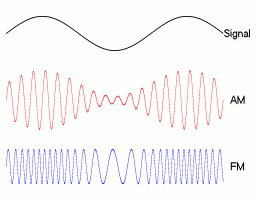Do we know what a radio wave looks like?
Forget the quantum stuff for a moment. If you want to learn about quantum electrodynamics, read QED by Richard Feynman. (You should read it anyway; it may be the only really good pop physics book.)
Classically, an electromagnetic field is a force field that acts on electric charge. It doesn't "look like" something any more than a mechanical push or pull does. One of the things that the EM forces can act on is molecules. They can change the shape of the molecules, or (at high frequencies) even break chemical bonds. That's how you see -- light stimulates a chemical reaction in the cells of your retina, which kicks off a chain of chemical reactions that culminate in brain activity.
When we say that a radio wave can be described as a sine wave, we're talking about how the amplitude of the wave (i.e. the strength of the force) varies over space and time. Sine waves tend to pop up a lot for the reasons Dave mentioned -- they're simple solutions to second-order differential equations, and you can use Fourier analysis to describe other signals in terms of sinusoids. Sine waves are also used to talk about sound, for the same reason.
Most radio waves will not be pure sinusoids, but many are based on sinusoids. For example, the amplitudes of AM radio waves are sinusoids whose amplitude varies slowly. The amplitudes of FM radio waves are sinusoids whose frequencies vary slowly. Here's an illustration, courtesy of Berserkerus on Wikimedia Commons:

Notice that the example signal in this image is also a sine wave. That's not an accident. Sine waves work well as simple test signals. The radiation from power lines would also be pretty close to a pure sine wave.
If you want to visualize a radio wave, imagine being underwater near a beach. The currents aren't visible, but you can still feel moving waves of water as they push you back and forth. That's what radio waves do to the electrons in an antenna.
A radio wave is not like an invisible string with a sinusoidal shape that moves at the speed of light.
A radio wave is made of an electric field and a magnetic field. Think of that as a property of the space. For instance, the property "color" of a banana is "yellow". The property "electric field" of that infinitesimal piece of space right here is 10 V/m. But over there it's 20 v/m.
A pure fixed frequency radio wave is the sinusoidal modification of the properties "electric field" and "magnetic field" of the space along the wave. In time and in space.
If you take a snapshot of the situation at time t = 1 sec for instance, and imagine that you have a magical instrument that is able to measure that "properties" relative to the distance to the transmitter.
Now if you plot the measured value of the electric field in a x-y plot where x is the distance to the transmitter and y the value you read on your instrument, you will see a sine, such as the one you see on textbooks. It just means that here E = 0 but 10m over there it's 10 V/m, at 20m it's 0 again and at 30m it's -10 V/m... for instance.
This is deliberately over simplified, but I thought that the goal here was to give some hints that allow to build an intuition about the subject.
Yes, we know what they look like. They are invisible.
Radio waves are self-propagating disturbances in the E and B field. Since we can't see E and B fields, radio waves are invisible.
If you want to bend the term "radio" a bit, then you can say that a narrow wavelength of about one octave, roughly 350 - 700 nm, are visible to the human eye since that is the wavelength of visible light. Light and radio waves are the same thing, except for their wavelength. We usually use the term "radio waves" to refer to much longer wavelengths than visible light.
If you are asking what the "shape" of the disturbances of the E and B field are, then the answer is they are sinusoids. That doesn't mean a nice sine line going up and down as you find in a textbook illustration. But, the magnitude of the E and B fields do follow a sine shape over distance and over time.